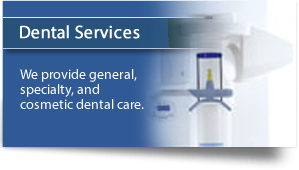Cavity Prevention
 Most of the time cavities are due to a diet high in sugary foods and a lack of brushing. Limiting sugar intake and brushing regularly can help. Every time someone eats, an acid reaction occurs inside their mouth as the bacteria digest the sugars. This reaction lasts approximately 20 minutes. During this time the acid environment can destroy the tooth structure, eventually leading to cavities.
Most of the time cavities are due to a diet high in sugary foods and a lack of brushing. Limiting sugar intake and brushing regularly can help. Every time someone eats, an acid reaction occurs inside their mouth as the bacteria digest the sugars. This reaction lasts approximately 20 minutes. During this time the acid environment can destroy the tooth structure, eventually leading to cavities.
Consistency of a person’s saliva also makes a difference; thinner saliva breaks up and washes away food more quickly. When a person eats diets high in carbohydrates and sugars they tend to have thicker saliva, which in turn allows more of the acid-producing bacteria that can cause cavities.
Tips for cavity prevention:
- Limit frequency of meals and snacks.
- Encourage brushing, flossing and rinsing.
- Watch what you drink.
- Avoid sticky foods.
- Make treats part of meals.
- Choose nutritious snacks.
Diagnosis
Ankylosis
Tooth ankylosis is the fusion of the tooth to the bone, preventing the tooth from erupting. This can happen in both primary (“baby”) teeth and permanent teeth, and may occur at any stage during development or eruption. The cause of this condition is still uncertain. Theories include trauma and heredity. An exam and x-ray are the main diagnostic methods for determining ankylosis. Some cases require surgical extractions for orthodontic and functional purposes.
The causes for ankylosis vary; for example,
the healthy ligament cells may dry up and die because of:
- Inflammation or infection
- Problems with metabolism or normal bone growth
- Congenital tendencies
- Gaps in the membranes around the tooth
- Abnormal pressure from the tongue
- Crushing or other damage
Ankylosis also may develop in children or adults when an injury (such as with sports or accidents) causes the top of the tooth to be broken off, leaving the roots behind.
Often we can diagnose ankylosis simply through observation. For example, a tooth noticeably lower in growth is a tell-tale sign of ankylosis. Also, with x-rays taken at regular checkups, we can view the development of permanent teeth that may be blocked by the primary teeth’s roots. By tapping on the teeth, we can hear a distinct difference between an ankylosed tooth and a normally growing tooth. That’s why we may use the clean handle of a dental mirror to tap lightly on children’s teeth as part of their regular dental exam. (An ankylosed tooth has a higher pitched or dulled sound as opposed to the more cushioned sound of a normal tooth.)
We may recommend several solutions for ankylosis, depending on the specific tooth and your child’s situation. For example, with younger children, we may simply recommend monitoring the situation for a period of time, to watch how the primary and permanent teeth develop. We may recommend removing the ankylosed tooth, to ensure that your child’s permanent teeth can develop straight and strong. We also may recommend surgery to expose, protect, or reposition the emerging tooth.
If we must remove a primary tooth before the permanent tooth is ready to emerge, we may use space maintainers to ensure that surrounding teeth do not crowd out the emerging permanent tooth. Sometimes orthodontic steps may be taken to ensure that your child’s teeth align and the bite is correct. In general, the sooner we can deal with your child’s ankylosed tooth, the fewer problems that are likely to develop later.

